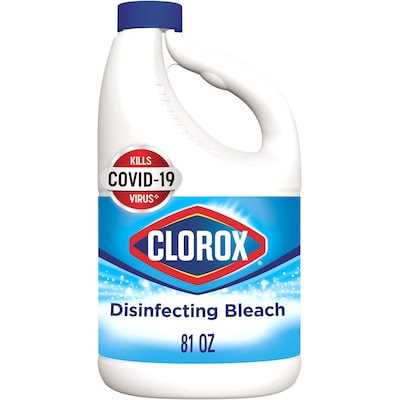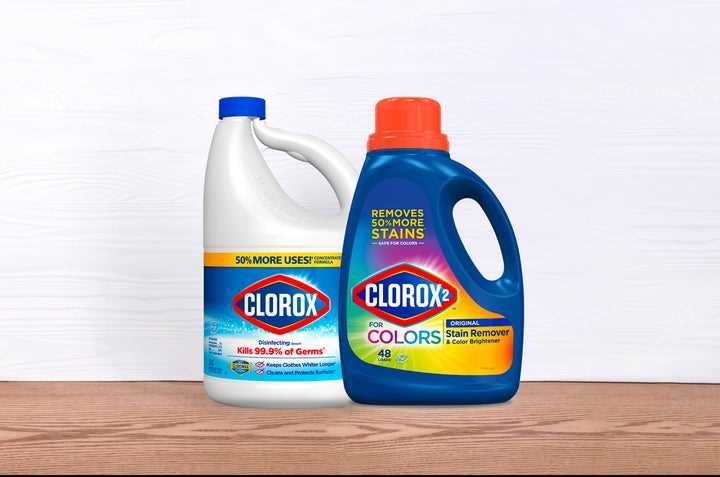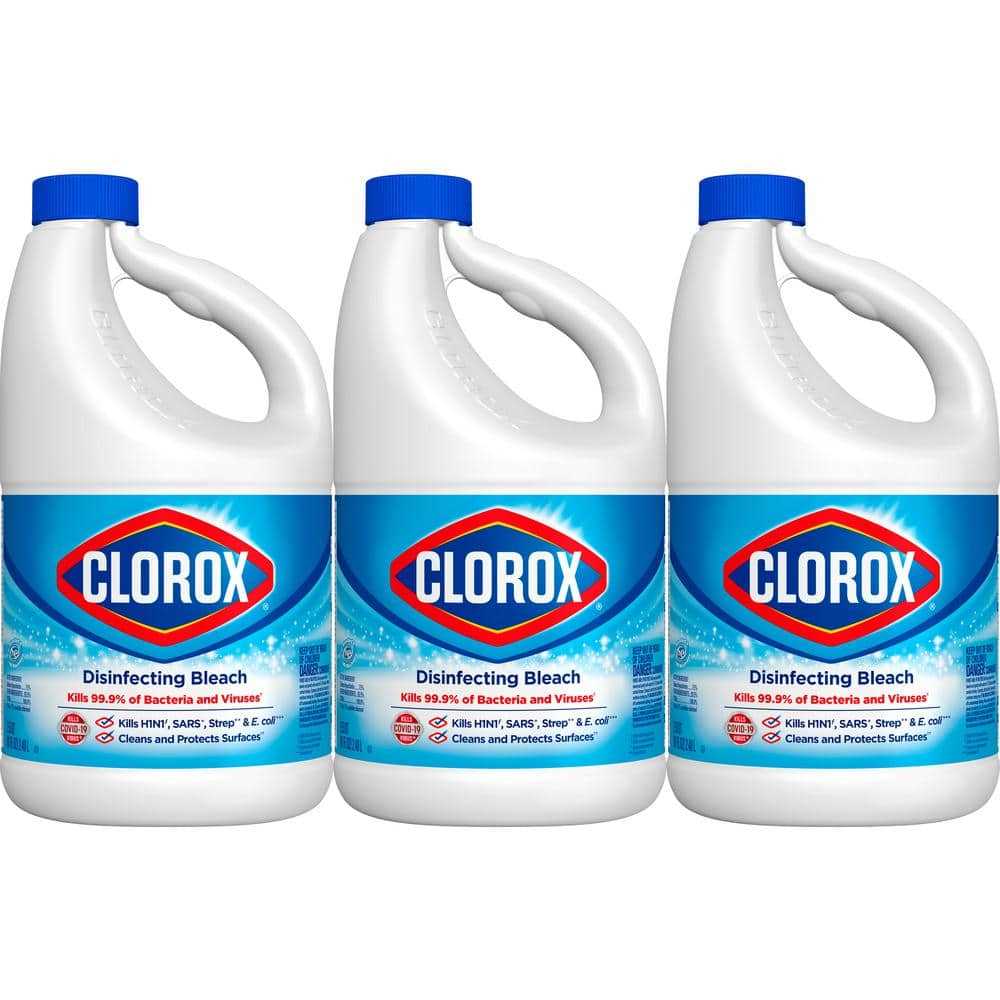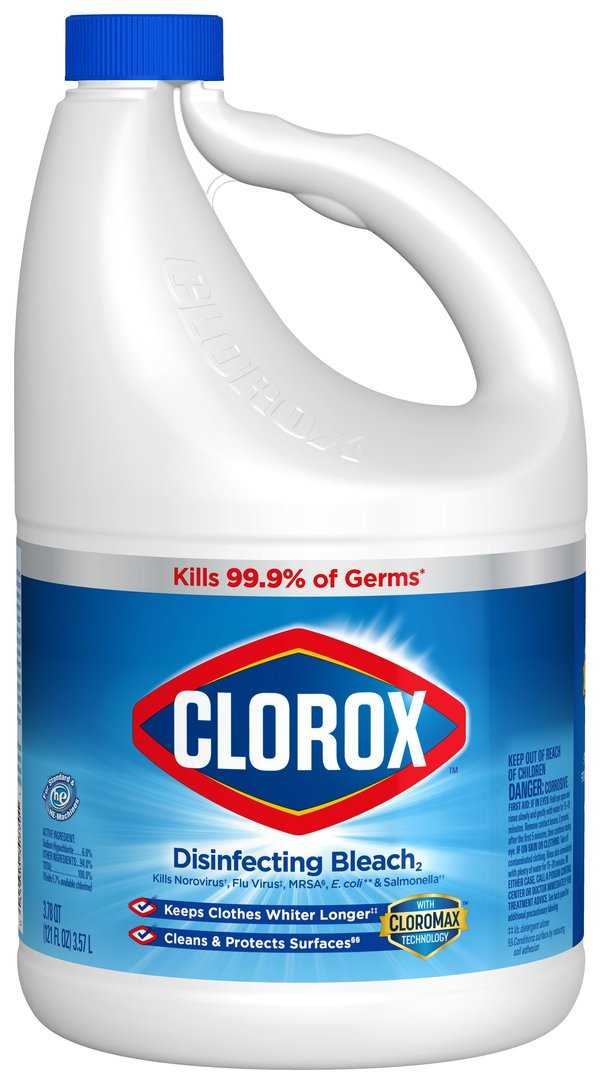




Disinfectant and bleach are two common household cleaning agents that are often used interchangeably. While they both serve the purpose of killing germs and sanitizing surfaces, there are distinct differences between the two.
Disinfectants are chemical substances that are designed to destroy or inactivate harmful microorganisms such as bacteria and viruses. They are commonly used to clean and disinfect surfaces in hospitals, schools, and homes. Disinfectants can come in various forms such as sprays, liquid solutions, or wipes. They are typically made with a combination of active ingredients that have been proven to kill a wide range of bacteria and viruses.
Bleach, on the other hand, is a specific type of disinfectant that is made from sodium hypochlorite. It is a powerful and effective sanitizer that is capable of killing a wide variety of germs. Bleach is commonly used in households for applications such as laundry, general cleaning, and sanitizing food preparation areas. It is known for its ability to remove stains and brighten whites, in addition to its disinfectant properties.
While both disinfectants and bleach serve the purpose of killing germs, it is important to note that not all disinfectants are bleach, and not all bleaches are disinfectants. It is essential to read the labels and follow the instructions provided by the manufacturer to ensure that the product you are using is suitable for your specific cleaning needs. Understanding the difference between disinfectants and bleach can help you make informed choices when it comes to keeping your home clean and germ-free.
Is Disinfectant the Same as Bleach?
Disinfectant and bleach are two commonly used cleaning agents, but they are not the same thing. While both can help kill germs and bacteria, they have different chemical compositions and uses.
Disinfectant
Disinfectant is a chemical substance that is used to destroy or inhibit the growth of harmful microorganisms on surfaces. It is typically used in households, healthcare facilities, and other public spaces to help prevent the spread of germs and infections. Disinfectants come in various forms, including sprays, wipes, and liquids, and they can be used on different surfaces such as countertops, floors, and furniture.
Disinfectant works by disrupting the cell membranes of microorganisms, which leads to their destruction. It can eliminate a wide range of pathogens, including bacteria, viruses, and fungi. However, not all disinfectants are effective against every type of microorganism, so it’s important to check the product label and choose the appropriate disinfectant for the specific task.
Bleach
Bleach, on the other hand, is a specific type of disinfectant that contains sodium hypochlorite as the active ingredient. It is a strong oxidizing agent that is effective in killing a broad spectrum of pathogens. Bleach is commonly used in laundry for whitening and stain removal, but it can also be used as a disinfectant.
When using bleach as a disinfectant, it is important to follow the instructions on the bottle and properly dilute the solution. Undiluted bleach can be harmful to surfaces and may cause discoloration or damage. It is also essential to use caution when handling bleach, as it can be irritating to the skin and eyes.
Conclusion
In summary, disinfectant and bleach are not the same thing. Disinfectant is a broad term that refers to a chemical substance used to kill or inhibit the growth of microorganisms, while bleach is a specific type of disinfectant that contains sodium hypochlorite. It’s important to choose the right disinfectant for the task at hand and to follow the instructions carefully to ensure effective and safe use.
Understanding the Difference
While disinfectant and bleach are both used for cleaning and killing germs, they are not the same thing. It’s important to understand the difference between these two substances to ensure their correct usage and effectiveness.
Disinfectant
A disinfectant is a chemical substance that is used to destroy or inactivate microorganisms on surfaces. It is designed to kill a wide range of bacteria, viruses, fungi, and other harmful pathogens. Disinfectants are commonly used in hospitals, homes, schools, and other places where hygiene is essential.
Disinfectants typically come in liquid form and can be sprayed, wiped, or applied to surfaces. They are effective in killing germs and preventing the spread of diseases. However, it is important to note that not all disinfectants are effective against all types of microorganisms, so it is important to select the appropriate disinfectant for the specific pathogens you are trying to eliminate.
Bleach
Bleach, on the other hand, is a chemical compound that is primarily used as a whitening agent and stain remover. It is a powerful oxidizing agent and has the ability to remove color from fabrics and surfaces. Bleach is commonly used in laundry, cleaning, and sanitizing processes.
One of the active ingredients in bleach is sodium hypochlorite, which has strong disinfectant properties. However, bleach is not specifically designed or formulated as a disinfectant. While it can effectively kill some germs, it may not be as effective against certain types of microorganisms compared to dedicated disinfectants. Therefore, it is important to use bleach properly and follow manufacturer’s instructions when using it for disinfection purposes.
Differences in Usage
The main difference between disinfectants and bleach is in their intended usage. Disinfectants are specifically formulated to kill germs and are designed for use on various surfaces to prevent the spread of infectious diseases. On the other hand, bleach is primarily used for whitening, cleaning, and stain removal purposes, and its disinfectant properties are an added benefit rather than the main purpose.
Another important difference is in the concentration and strength of the chemicals. Disinfectants are typically available in different strengths and concentrations to ensure effective germ killing, while bleach is commonly available in a standard concentration and strength.
Conclusion
In conclusion, disinfectants and bleach are not the same thing. Disinfectants are specifically formulated to kill a wide range of germs and prevent the spread of diseases, while bleach is primarily used as a whitening agent with some disinfectant properties. Understanding these differences is crucial in selecting the right product for your cleaning and disinfection needs.
How Disinfectants Work
Disinfectants are substances that are used to kill or inhibit the growth of microorganisms. They are commonly used to clean surfaces and objects in order to prevent the spread of harmful bacteria, viruses, and other germs.
Disinfectants work by destroying the cell walls or altering the cellular metabolism of the microorganisms. This can be achieved through different mechanisms depending on the type of disinfectant.
Chemical Disinfectants

Chemical disinfectants are commonly used in households, hospitals, and other settings to kill microorganisms. These disinfectants contain chemicals that are effective in destroying the cell walls, proteins, or enzymes of the microorganisms.
Some common chemical disinfectants include:
- Chlorine-based disinfectants: Chlorine is a very effective disinfectant that is commonly used in bleach. It is able to destroy the cell walls of microorganisms, making them unable to survive.
- Quaternary ammonium compounds: These disinfectants work by disrupting the cell membrane of microorganisms, leading to the leakage of cellular contents and eventual death.
- Alcohol-based disinfectants: Alcohol can denature proteins and disrupt the lipid membranes of microorganisms, leading to their inactivation.
Physical Disinfectants

Physical disinfectants work by using heat, radiation, or other physical processes to kill or inactivate microorganisms. These disinfectants are commonly used in healthcare settings and laboratories.
Some common physical disinfectants include:
- Heat: High temperatures can kill microorganisms by denaturing their proteins and destroying the cellular structures.
- Ultraviolet (UV) radiation: UV radiation can damage the DNA and RNA of microorganisms, preventing them from replicating and causing harm.
- Filtration: Filtration can physically remove microorganisms from liquids or gases, preventing their spread.
Effectiveness of Disinfectants
The effectiveness of disinfectants can vary depending on several factors, such as the type and concentration of the disinfectant, the contact time with the microorganisms, and the conditions in which they are used.
It is important to carefully follow the instructions provided by the manufacturer when using disinfectants to ensure their optimal effectiveness. Additionally, it is recommended to use different types of disinfectants to target a wide range of microorganisms.
How Bleach Works

Bleach is a powerful disinfectant that is used to kill germs, bacteria, viruses, and fungi. It is commonly used in households, healthcare facilities, and laboratories to sanitize surfaces and prevent the spread of infections.
The active ingredient in bleach is sodium hypochlorite. When bleach is mixed with water, it forms hypochlorous acid. This acid is highly reactive and can attack and destroy the cellular structures of microorganisms.
Bleach works by breaking down the proteins, lipids, and other molecules that are essential for the survival and reproduction of microorganisms. It disrupts the function of enzymes and other cellular components, leading to the death of the organisms.
Bleach is effective against a wide range of microorganisms, including bacteria like Staphylococcus aureus and Escherichia coli, viruses like influenza and hepatitis, and fungi like Candida albicans. It can also kill spores, which are the dormant forms of bacteria and fungi that are highly resistant to disinfection.
It is important to follow the instructions on the bleach label for proper use and dilution. Using too much bleach or not diluting it properly can be harmful to surfaces, fabrics, and even human health. Bleach should also be used in a well-ventilated area and not mixed with other cleaning products, as it can produce toxic fumes.
Advantages of Bleach
- Bleach is widely available and affordable.
- It is effective against a broad spectrum of microorganisms.
- Bleach can be used to disinfect a variety of surfaces, including countertops, floors, and bathroom fixtures.
- It is easy to use and does not require extensive training or special equipment.
Disadvantages of Bleach
- Bleach can be corrosive to certain materials, such as metals and fabrics.
- It may cause skin and eye irritation, and can be harmful if ingested or inhaled.
- Overuse or improper use of bleach can lead to the development of antibiotic-resistant strains of bacteria.
- It has a strong smell that some people find unpleasant.
Despite its limitations, bleach remains a popular and effective disinfectant when used correctly. It is important to read and follow the instructions provided by the manufacturer to ensure safe and effective use.
Choosing the Right Product for Your Needs
1. Consider your cleaning needs
Before selecting a disinfectant or bleach product, it’s important to assess your specific cleaning needs. Different products are designed to address different types of surfaces and contaminants. Consider whether you need a product for general cleaning, sanitizing or disinfecting, and choose accordingly.
2. Read the labels
Always take the time to read the labels of the products you are considering. Look for key information such as active ingredients, directions for use, and any safety precautions. This will help you determine if the product is suitable for your needs and if it meets the necessary standards.
3. Check for effectiveness against specific pathogens
If you are looking to disinfect a particular area or surface, check if the product you are considering is effective against the specific pathogens you are concerned about. Many disinfectants and bleaches are tested and approved for use against common bacteria, viruses, and fungi, but it’s important to ensure that they are effective against the specific pathogens you are targeting.
4. Consider safety and environmental factors
When choosing a disinfectant or bleach product, it is important to consider safety and environmental factors. Some products may contain harsh chemicals that can be harmful to humans, pets, or the environment. Look for products that are labeled as safe for use around people and animals, or opt for eco-friendly options.
5. Evaluate cost and availability

Cost and availability are also important factors to consider when choosing a disinfectant or bleach product. Compare prices and consider whether the product is easily accessible to you. Keep in mind that certain products may be more expensive or harder to find, especially in times of high demand.
6. Consult professionals if needed
If you are unsure about which product to choose or if you have specific requirements, it’s always a good idea to consult professionals. Contact a cleaning expert, a healthcare professional, or the manufacturer of the products for guidance and recommendations based on your specific needs.
By considering these factors, you can choose the right disinfectant or bleach product that best suits your cleaning needs, ensuring a safe and effective cleaning process.
Important Considerations and Safety Precautions
1. Read and follow the label instructions
When using disinfectants or bleach, always read and carefully follow the instructions provided on the label. This includes information on proper usage, dilution ratios, contact time, and any specific safety precautions.
2. Use in a well-ventilated area
Both disinfectants and bleach can emit strong fumes that may be harmful if inhaled in large quantities. Ensure that you are using these products in a well-ventilated area to minimize exposure to toxic fumes.
3. Wear appropriate protective gear
When handling disinfectants or bleach, it is essential to protect yourself by wearing appropriate safety gear. This may include gloves, goggles, masks, or aprons, depending on the specific product and the level of exposure risk.
4. Avoid mixing with other chemicals
Never mix disinfectants or bleach with other cleaning products, especially those containing ammonia or acids. Mixing certain chemicals can produce dangerous reactions or release toxic fumes.
5. Keep out of reach of children and pets
Both disinfectants and bleach are hazardous substances that should be stored in a safe place, out of reach of children and pets. Always close containers tightly and store in a locked cabinet or high shelf.
6. Clean surfaces before disinfecting
Before applying a disinfectant, it is crucial to clean the surface thoroughly to remove any dirt, grime, or organic matter. Disinfectants are more effective on clean surfaces and may be less effective if applied to dirty or greasy surfaces.
7. Test on a small inconspicuous area
If you are using a disinfectant or bleach on a delicate or colored surface, it is recommended to test the product on a small inconspicuous area first. This will help ensure that the product does not cause any damage or discoloration.
8. Dispose of waste properly
Dispose of disinfectant or bleach waste according to local regulations. Never pour these substances down the drain or into the environment, as they can be harmful to aquatic life and contaminate water sources.
9. Store and handle with care
Always store disinfectants or bleach in their original containers and away from heat sources or direct sunlight. Follow any specific storage instructions provided by the manufacturer to ensure their effectiveness and safety.
10. Seek medical attention if needed
If you accidentally ingest or come into contact with an excessive amount of disinfectant or bleach and experience symptoms such as difficulty breathing, skin irritation, or eye irritation, seek immediate medical attention.
Remember, while disinfectants and bleach are effective in killing germs and preventing the spread of diseases, they can also be hazardous if not used properly. By following these important considerations and safety precautions, you can ensure their effectiveness while prioritizing your safety and the safety of others.
FAQ
What is the difference between disinfectant and bleach?
Disinfectant and bleach are two different types of cleaning agents. Disinfectants are chemicals that kill or inactivate microorganisms on surfaces. Bleach, on the other hand, is a type of disinfectant that contains sodium hypochlorite as its active ingredient. It is effective in killing a wide range of bacteria, viruses, and fungi.
Can bleach be used as a disinfectant?
Yes, bleach can be used as a disinfectant. It is a strong and effective disinfectant that kills a wide range of microorganisms, including bacteria, viruses, and fungi. However, it is important to use bleach properly and follow the instructions on the label to ensure its effectiveness and to avoid any potential hazards.
Are there any differences in how disinfectant and bleach are used?
Disinfectants and bleach are typically used in similar ways. Both are applied to surfaces and left to sit for a certain period of time to kill or inactivate microorganisms. However, it is important to note that bleach is more caustic and can cause damage to certain materials, so it should be used with caution and according to the manufacturer’s instructions.
Are there any specific surfaces that can only be cleaned with disinfectant or bleach?
Disinfectants and bleach can be used on a wide range of surfaces, including countertops, floors, toilets, and other hard non-porous surfaces. However, it is important to read the label and follow the instructions to determine if a specific surface is compatible with the product. Some surfaces may be damaged by bleach, so it is important to use the appropriate cleaning agent for each surface.
Is bleach more effective than disinfectant?
Bleach can be more effective than some disinfectants in killing a wide range of microorganisms. However, the effectiveness of a cleaning agent depends on various factors, including the concentration of the active ingredient, contact time, and the type of microorganisms present. It is important to choose a disinfectant or bleach that is appropriate for the specific cleaning task and follow the instructions for use.
Can disinfectant and bleach be used interchangeably?
Disinfectants and bleach can be used interchangeably in some situations, as both are effective in killing microorganisms. However, it is important to consider the specific cleaning task and follow the instructions on the label. Bleach, for example, may not be suitable for certain surfaces or materials and can cause damage if used improperly.
What are some common disinfectants other than bleach?
There are many common disinfectants other than bleach available on the market. Some examples include alcohol-based disinfectants, hydrogen peroxide, quaternary ammonium compounds (such as benzalkonium chloride), and phenolic disinfectants. These disinfectants can be effective in killing a range of microorganisms, and they may be used as alternatives to bleach depending on the specific cleaning task.













